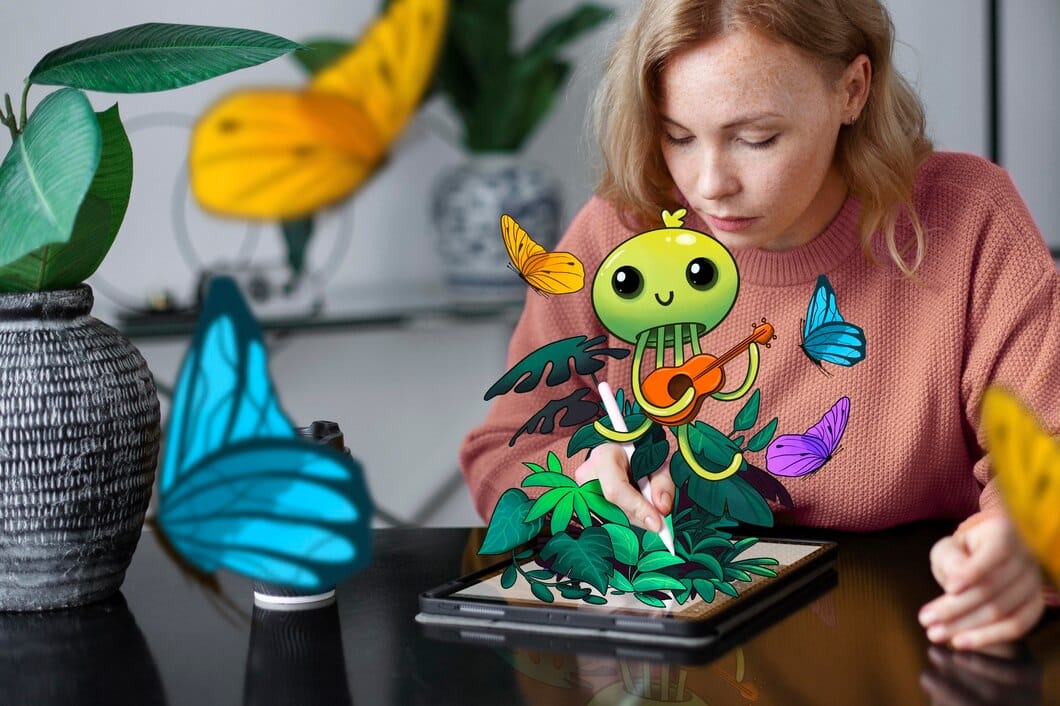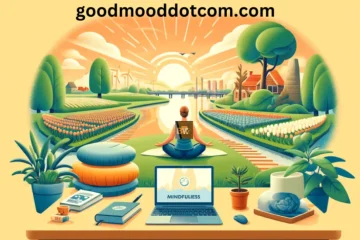Art has been revolutionized by technology, and Artificial Intelligence is leading this creative renaissance. If you’re an AI innovator keen to explore the intersection of tech and creativity, you’re in for a treat. This comprehensive guide will not only explain the nuances of AI art but also walk you through the steps to create your AI art now. Imagine creating stunning visuals with just a few clicks, as algorithms transform your vision into masterpieces. Intrigued? Let’s get started!
Understanding AI Art Techniques, Tools, and Platforms
Before you create your AI art now, it’s essential to understand the landscape of AI in the art world. AI art involves using artificial intelligence algorithms to generate artwork. These algorithms analyze vast datasets to mimic artistic styles and produce unique pieces.
Several techniques are employed in AI art, including Generative Adversarial Networks (GANs), neural style transfer, and deep learning. Platforms like DeepArt, RunwayML, and Artbreeder have democratized access to these sophisticated tools, making it feasible for anyone to create AI art now.
Step-By-Step Guide to Creating AI Art
Creating AI art may seem daunting, but with the right guidance, you can master it. Follow this step-by-step guide to bring your creative ideas to life.
Selecting and Preparing Your Source Materials
Your AI art creation begins with choosing the right source materials. These could be photographs, sketches, or even digital paintings. The quality of your input directly impacts the output. High-resolution images tend to work best. Ensure your source materials are clear and focused, as this will make it easier for the AI to identify patterns and details.
Choosing the Right AI Tool for Your Vision
The next step is selecting the appropriate AI tool. Tools like DeepArt and RunwayML offer a range of features tailored for different artistic visions. For instance, DeepArt is known for its neural style transfer capabilities, while RunwayML provides versatile AI models for various creative tasks. Experiment with a few tools to find the one that aligns with your vision.
Adjusting Parameters and Settings
Once you’ve selected your AI tool, it’s time to adjust the parameters and settings. These settings control how the AI analyzes and transforms your source materials. You can tweak parameters such as style intensity, color balance, and texture. Spend some time experimenting with different settings to achieve the desired effect. Remember, creating AI art now is as much about exploration as it is about execution.
Real-Time Demonstration of AI Art Creation
Seeing is believing. Let’s walk through a real-time demonstration to create your AI art now. Upload your source material to your chosen AI platform. Adjust the settings based on your preference. Start the AI process and watch as it transforms your input into an artistic masterpiece. The best part? You can make adjustments on the fly, providing instant feedback to the algorithm.
Showcasing AI Art Success Stories
The AI art world is brimming with success stories. Artists like Mario Klingemann and Anna Ridler have garnered acclaim for their AI-generated works. These pioneers have not only expanded the boundaries of art but also inspired countless others to create their AI art now. Explore their works to understand the potential of AI in art and gather inspiration for your creations.

Tips for Enhancing Your AI Art
Creating AI art is just the beginning. Here are some tips to elevate your work to the next level:
- Blend AI and Human Creativity:
Mix traditional and digital techniques. Start with an AI-generated piece and refine it with hand-drawn elements or digital enhancements.
- Experiment with Multiple Styles:
Don’t limit yourself to one style. Use different AI tools to create diverse artworks. Compare and contrast to find what resonates most with your artistic vision.
- Seek Feedback:
Share your work with fellow artists and AI enthusiasts. Constructive criticism can provide valuable insights and spur further creativity.
Legal and Ethical Considerations in AI Art
While creating AI art is exciting, it’s crucial to consider the legal and ethical implications. Understand the copyright laws related to AI-generated art. Who owns the artwork—the creator or the algorithm? Additionally, consider the ethical aspects of using datasets. Ensure that the data used by your AI tools is ethically sourced and respects privacy norms.
Conclusion The Future of AI in Creative Expression
AI is transforming the art industry, offering unprecedented opportunities for creativity and innovation. The future holds immense potential, with AI likely to continue pushing the boundaries of what’s possible in art.
The Impact of AI on the Art Industry
AI is not just a tool; it’s a collaborator in the creative process. It democratizes art creation, allowing anyone with a vision to produce stunning works. This technology is leveling the playing field, providing opportunities for both seasoned artists and novices.
Inviting Readers to Share Their AI Art Experiences
We’d love to hear your experiences with AI art. Have you tried creating your AI art now? What tools did you use? Share your thoughts and artworks in the comments below. Let’s build a community of AI innovators who inspire and learn from each other.
Encouraging Engagement and Sharing
Ready to create your AI art now? Join the revolution and start your artistic journey today. Share this guide with fellow art enthusiasts and encourage them to explore the exciting world of AI art.
By following this comprehensive guide, you’re well on your way to becoming an AI art innovator. Happy creating!




